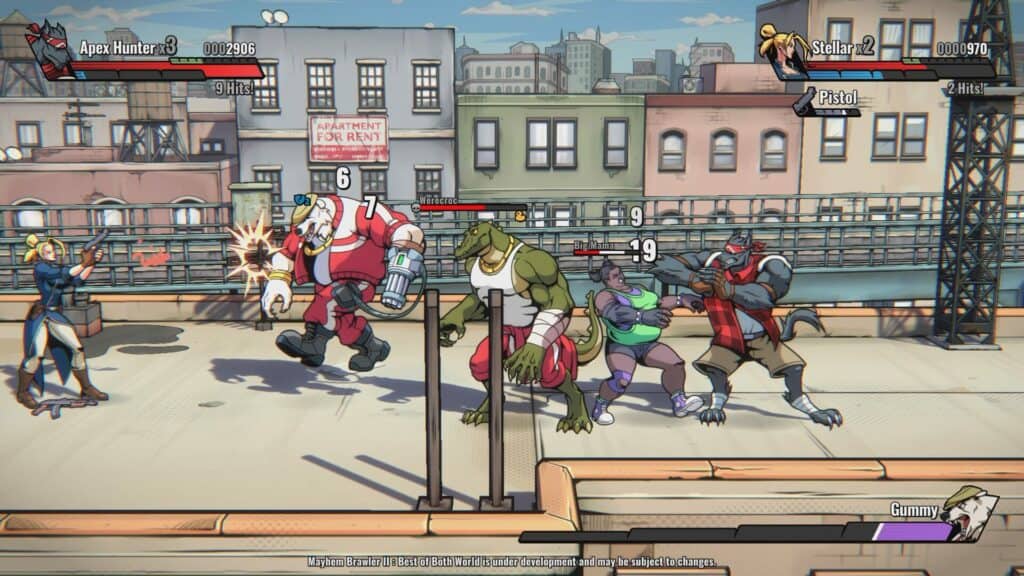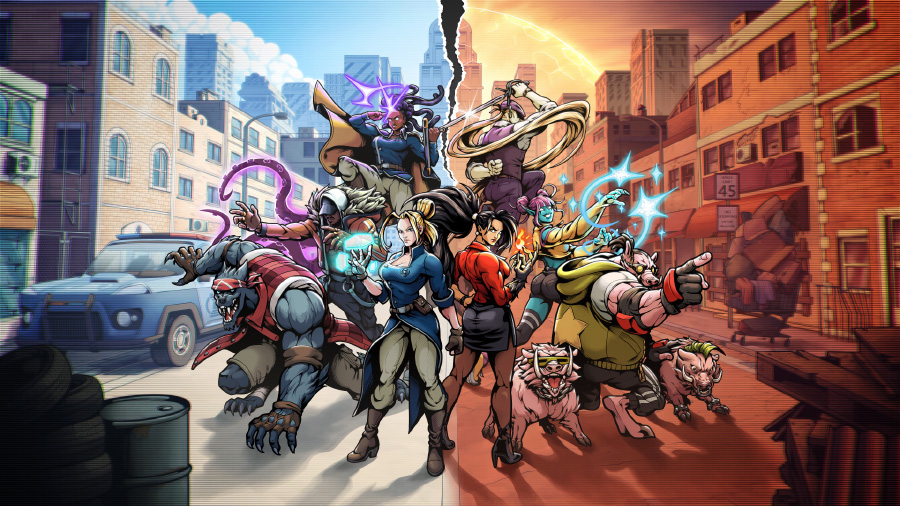Hero Concept is a multi-platform and multi-genre video game development studio based in Istanbul, Turkiye. Founded in 2017, Hero Concept has released three titles so far. Doughlings: Arcade is a classic arcade game that borrows Breakout’s mechanics and rules and introduces new ones on top of them. Doughlings: Invasion is inspired heavily by Space Invaders and does the same thing. Finally, Mayhem Brawler is a beat’ em-up game set in a comic book world with a high emphasis on fighting game mechanics.
Hero Concept’s fourth title is Mayhem Brawler II: Best of Both Worlds, which will be released in 2025.
The Mayhem Brawler series is influenced by comic books and classic arcade games. Can you elaborate on how comic books and other real-life elements or personal experiences influenced the development of the Mayhem Brawler series? What specific elements from these inspirations did you incorporate into the game’s design and narrative?
Comic books and arcade games entered my life at the same time. I was in middle school, hated school, and wasn’t very social except for a few nerd friends. One of the first games I played in the arcade was Double Dragon, and one of the first comic books I read was X-Men. Over time, others were added to these, and comic books and fighting games have always been an important part of my life. So, the source of the superhero-style comic book narrative in the game comes from this period of my life. Additionally, I can confess that most of the anecdotes Star narrates in the cinematics are derived from my personal experiences.

What do you think are the essential elements of a successful beat ’em up game?
In my opinion, the most important thing is having a satisfying “hit feel.” The feedback to the player at the moment when one character contacts another and deals damage is critical. We have many components to achieve this, of course: character vibrations, sound effects, controller vibrations, and screen shaking, among others. But these need to be blended correctly. The hit feel is important for all game genres involving combat, but it becomes much more crucial when it comes to beat ’em-up games.
Another essential element is “combo potential.” This wasn’t much of a feature in 90s classics like Double Dragon, Final Fight, or Captain Commando. Although you could perform different attacks, it wasn’t really possible to mix and match them internally. However, if you look at recent successful games like Fight ‘n Rage, Streets of Rage 4, TMNT: Shredder’s Revenge, and (ahem!) Mayhem Brawler, you’ll see that they almost have the combo variety of the fighting game genre.

What inspired the introduction of rogue-lite and RPG mechanics into a traditional beat ’em-up format for this sequel? How do these new elements enhance the overall gameplay experience?
In the early 90s, both beat ’em up games and fighting games were very popular. However, towards the end of the 90s, beat ’em up games lost their popularity while fighting games continued to rise. The most significant reason for this is undoubtedly the competitive nature of fighting games, which drew more attention. But I believe another reason is that beat ’em up games were very hesitant to add new mechanics.
Even today, it’s quite difficult to see innovations in new examples of the genre. Therefore, we decided to increase the replay value with rogue-lite mechanics and enrich the game content with RPG mechanics.

What were some of the biggest challenges you faced during the development of “Mayhem Brawler II,” particularly with its new mechanics and time transition feature? How did you overcome these challenges?
Our biggest technical challenge was implementing online multiplayer support, which required us to fundamentally change the game’s code paradigm.
The transition mechanics required us to interpret every level, hero, and enemy in two different ways. Although this content appears to be played simultaneously, it actually increases the game’s replay value.

The art team has changed significantly from Mayhem Brawler 1 to Mayhem Brawler 2. How did these changes impact the game, and what steps did you take to ensure the art style remained consistent?
In our studio, we focus on how the team works together rather than on individuals. We divide the tasks into phases to ensure that everyone contributes to each piece of work. For instance, almost the entire art team worked on the cover of Mayhem Brawler II. We even published a dev diary about this.
Additionally, we try to prevent burnout by encouraging role changes so that no one is doing the same task constantly. This also helps the artists develop a common artistic language.

How did the team approach creating visually distinct eras for the time transition mechanic? What artistic techniques were used to differentiate the past and present settings?
Although 2005 feels like yesterday to me, it was truly a different time. We paid close attention to the period’s norms, especially when designing characters’ clothing and technological equipment, like cell phones.
To depict the city’s 20-year change, we used various techniques. Sometimes, we aged locations, sometimes we added new buildings and other times, we completely changed the way certain areas were used.
The most obvious visual change was the addition of a roughly 12-hour time difference between the two eras. This enhanced the visual shock effect during transitions.

Before “Mayhem Brawler” came out, you mentioned that it was your dream to create a game similar to “Street Fighter.” Having achieved that dream, are there any other dream projects you wish to pursue in the future? You previously mentioned a space sim game called “Intercept Course.” Can we expect to see that or any other new projects in the future?
Yes, I’ve had a dream of making a fighting game since high school. However, breaking into the fighting game market is not that easy. But we will create a “Mayhem Fighter” in the future.
“Intercept Course” will be a sci-fi-themed deck-building game. It will be our fifth project after Mayhem Brawler II: Best of Both Worlds.
Additionally, we have a project called “Mayhem Chronicles,” which is a trading card game. However, I don’t know yet when we will bring it to life.





